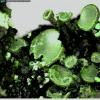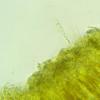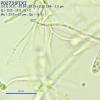
10-11-2023 12:59
 Stoykov Dimitar
Stoykov Dimitar
Hallo,I am looking for the description and illustr

05-11-2023 20:53
S. RebeccaHere is a Helotiale fungi found at Werfen/Salzburg

06-10-2023 21:48
Rajamaki MarttiHi! Today (6.10.2023) I found one i think Geoglos

03-11-2023 14:23
 Riet van Oosten
Riet van Oosten
Hello, Found by Laurens van der Linde, 26-10-2023

02-11-2023 23:36
Rajamaki MarttiHi! Does anybody has good suggestion about litera

05-11-2023 01:31
Valencia Lopez Francisco JavierHola amigos/asApotecios recolectados en un pastiza

02-11-2023 18:59
 Michel Hairaud
Michel Hairaud
Bonsoir, Je présente une récolte qu'il m'est di

02-11-2023 21:15
 Robin Isaksson
Robin Isaksson
Hi! Anyone know this on found on calcareous cla

I agree that the Dinolite image renders the fungus in too light a shade, though I did already tweak it somewhat to improve it from the initial.
This was found by a 7 year old who was also with us on our NW Fungus Group foray, on Sunday 15th October; in a very rotten stump, probably Betula or Quercus.
The site is a Lancashire Wildlife Trust Reserve called Mere Sands Wood north of Liverpool.
The UK GR is SD 4470 1570, which is equivalent to Long. - 6.953; lat. 49.936.
I had kept some of the specimen for the time being. ..... ?
Kind regards,
John Watt

Sorry, I used the Brit Geol converter but forgot that on our usual OS maps the first digit is not shown in large type, so you're quite right with your Long and Latitude. Instead of that first numeral, the OS National Grid systems divides the country up into 100km grids which each have two identifying letters (SD in this case) to complement that first numeral.
I have had a good look at the fragment of wood and it does look like Quercus (robur likely).
The finder was young James Roberts (8 yr) .
Thanks also for pointing out the Anamorph. I can have a look at that next time the microscope is out.



